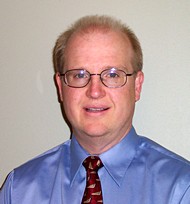
Joint with AIChE

 | Joint with AIChE | 
|
|---|
| Dr. Bruce Cook |

|
|---|---|
" Chemistry of Gasoline Sulfur Reduction "
|
Date: Thursday, February 22, 2007 - note Thursday, not Friday. Location: European Crystal Banquet Center
Parlor BC
519 W. Algonquin Road
Arlington Heights, IL 60005Cost: $30.00 for members of ACS and their guests, $32.00 for non-members,
$15 for students or unemployedDinner reservations are required and should be received in the Section Office via phone (847-647-8405), FAX (847-647-8364), email (chicagoacs@ameritech.net), or web by noon on Tuesday, February 20. PLEASE HONOR YOUR RESERVATIONS. The Section must pay for all dinner orders. No-shows will be billed.
Please REGISTER ON LINE
5:00 - 6:00 PM Job Club
5:30 - 6:30 PM Social Hour
6:30 PM Dinner
8:00 PM Program
Abstract:
Regulations to reduce the sulfur level in gasoline to less than 50 wppm are in place or planned in many countries. The primary source of sulfur in gasoline is Fluid Catalytic Cracking (FCC) cat naphtha, which contributes approximately 50 wt% of gasoline pool volume but nearly 95% of gasoline sulfur. Critical to the economics of any gasoline desulfurization process is the ability to effectively remove sulfur from the mercaptans, thiophenes, and benzothiophenes in FCC naphtha without saturating the important high octane olefins present. Several processes have been developed to meet these goals and have seen broad commercial application. For example, ExxonMobil's SCANfining I and II processes have over 1 MBD of committed or installed world-wide capacity.
Three critical steps are typical parts of most commercial FCC naphtha HDS processes. The first of these is a step designed to react or remove the mercaptan sulfur found in the lightest fraction of FCC naphtha (LCN, C5-75 C) without saturating the large amount of important C5/C6 olefins in this boiling range. The second critical step is a selective HDS process to maximize the desulfurization of thiophenic sulfur, while minimizing the saturation of important C7/C8 olefins in intermediate or combined intermediate/heavy cat naphtha. Selective HDS of ICN and ICN/HCN requires combination of optimized process conditions and selective catalyst (for example RT-225) technology to maximize thiophene HDS while minimizing olefin saturation. The third critical process step involves minimizing mercaptan formation from the reaction of product H2S with feed olefins (mercaptan reversion).
This talk will focus on the critical processes involved in producing gasoline, and the chemistry of all three critical process steps for removing sulfur from gasoline.
Biography:
Dr. Bruce Cook was born in Grand Rapids, MI. He received his BS degree in chemistry from Hope College, Holland MI in 1981, and his PhD in chemistry from the University of Illinois at Urbana-Champaign in 1986. His thesis research, under the direction of Professor Kenneth Suslick, was on shape selective catalytic and photo-catalytic oxidations of hydrocarbons with metallo-porphyrin catalysts.
In 1986, Dr. Cook joined Exxon Research and Development Laboratories in Baton Rouge, LA where he was involved in exploratory research on Catalytic Reforming, Fluid Catalytic Cracking (FCC), Catalytic Hydroprocessing and Thermal Cracking. In 1995, Dr. Cook moved to what is now ExxonMobil Corporate Strategic Research (EM-CSR) located in Annandale, NJ. At EM-CSR, Dr. Cook has pursued fundamental research in the areas of Fischer-Tropsch Wax hydroisomerization, selective FCC naphtha hydroprocessing (SCANfining), and Fluid Catalytic Cracking. Dr. Cook is currently ExxonMobil Team Leader for Exploratory Fluid Catalytic Cracking Research. Dr. Cook holds 30 US Patents and is the co-author of 17 publications. Dr. Cook is also a co-recipient of the 2001 American Chemical Society Southwest Region Industrial Innovation Award, the 2005 American Chemical Society Heroes of Chemistry Award, and the NJ R&D Council's 2006 Thomas Alva Edison Patent Award for his research leading to the commercialization of ExxonMobil's SCANfining Processes.
Parking: Free
Updated 2/15/07Cream of Tomato Soup
Garden Salad
Choice of:
- Brochette of Beef on Bed of Rice with 3 Peppercorn Sauce
- Orange Roughy -- note change of entrée. Whitefish was not available. Sorry.
- Vegetarian - Sauteed Vegetables in Phyllo
Homemade Cheesecake (by Elizabeth) with Cherry Sauce (in honor of George Washington's Birthday)